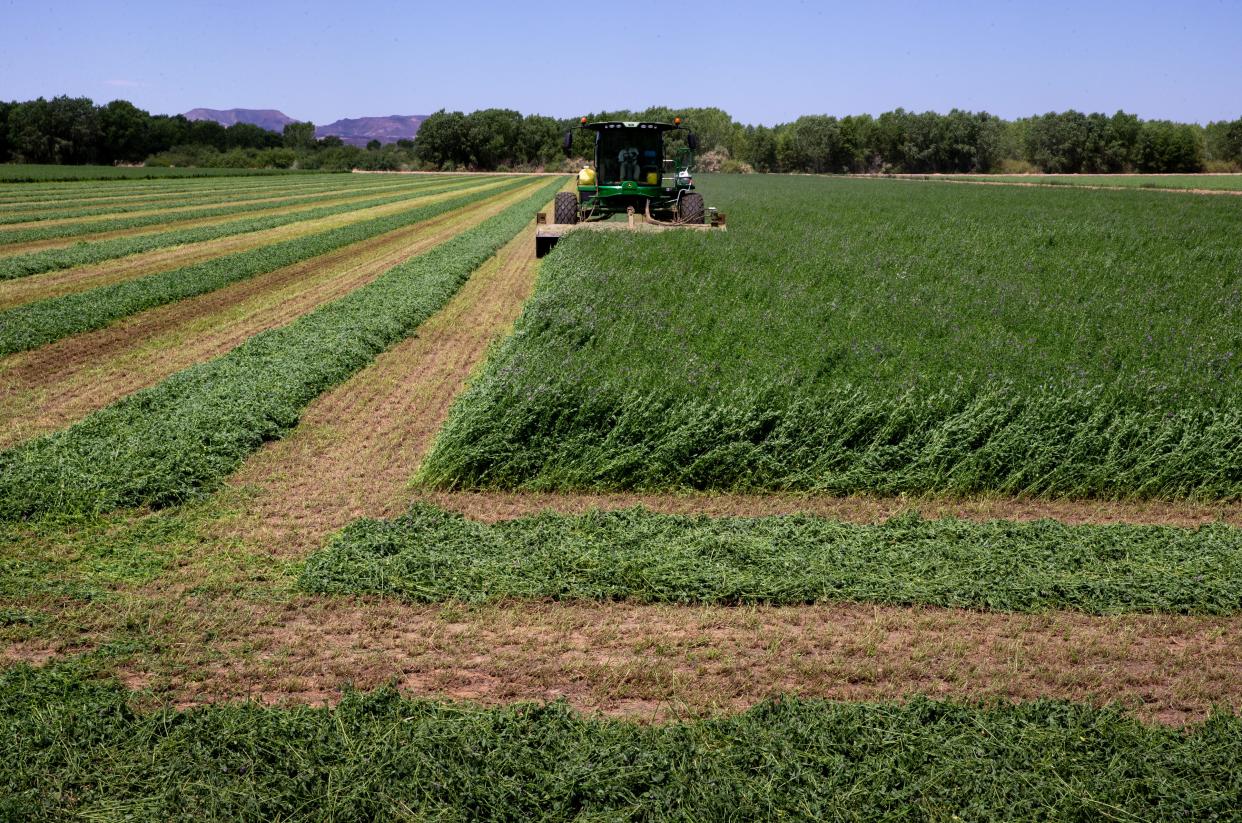Queen Creek may have won a key battle for Colorado River water. But why is it so quiet?

Weird. I didn’t feel the ground shake last week.
The U.S. Department of the Interior, which has the final say on these things, found no significant impact in transferring Colorado River water from GSC Farm LLC in rural La Paz County to Queen Creek, where it will replenish groundwater pumping for development.
That means, unless rural communities decide to fight this further, the agreements will be drawn up, the farmland will be fallowed and the water it once used will travel some 200 miles away, perhaps as early as January, according to reporting from Axios Phoenix.
And yet, it’s all quiet on the Western front, as opponents decide their next moves. (Update: The Mohave County Board of Supervisors voted on Sept. 19 to pursue legal action against the feds and is now approaching communities along the river to join in the lawsuit, in hopes of presenting a united front against this deal.)
What happened?
Lease pitted urban against rural Arizona
This was once the most contentious water deal pending in Arizona.
Tensions were so high that when the Arizona Department of Water Resources revised its recommendation to allow the lease last year, multiple parties described it as “World War III.”
At issue was whether an investment firm could sell its lease to 2,033 acre-feet of fourth-priority Colorado River water, which Interior ultimately oversees. It’s not a lot of water, in the grand scheme of things, but on-river communities saw it as the camel’s nose under the tent.
Water district rejected: Where will Rio Verde Foothills' water come from now?
They warned that if this deal proceeded, it would set a precedent to transfer more water away from these communities, sacrificing their future growth for the economic interests of central Arizona.
They pointed to the other investment firms that had already snapped up land near the river in hopes of one day selling its water rights.
Which explains why this case also was closely watched among parties in Colorado and California, who worried it would embolden even more land speculation there.
Opponents still see it as bad precedent
And yet, it’s oddly quiet now.
It’s not because folks no longer care. Opponents remain vehemently against this water transfer, for all the reasons mentioned above. Nothing has changed there.
But things have changed around them, now that the feds have asked the seven states that rely on the Colorado River to cut 2 to 4 million acre-feet of use next year.
Our inability to find that much water this quickly has completely upended river politics, and with all the finger-pointing, it’s difficult to know how secure Arizona’s 2.8 million acre-feet allocation really is anymore.
If Interior’s decision on the lease caused any tremors, this earthquake has completely upstaged them.
The Colorado River changed around them
And understandably so.
According to the state’s priority system, cities and tribes that rely on the Central Arizona Project are next in line for cuts. But it’s plausible that on-river users also could face cuts for the first time in this 2 to 4 million acre-feet round.
If that’s the case, fourth-priority water like that of the GSC Farm lease would be next on the chopping block after the CAP.
Not knowing who could be affected or how deep the cuts could go injects a whole new measure of uncertainty into the potential impacts of this case.
Which isn’t exactly helpful, especially since we are no closer to resolving how and where we should sustain growth – thorny issues that Queen Creek’s quest for water represents.
Can we find a win-win? We could at least try
If anything, a tanking Colorado River means even more folks are going to be in the market for a renewable water source. And when the cuts shake out, it will probably be open season for any water that could still be leased.
Before this re-erupts into World War III, perhaps there is middle ground to be found. Instead of outlawing water leases, as some lawmakers have unsuccessfully pushed, would on-river communities be willing to allow some transfers in exchange for cash to pursue aquifer recharge or water recycling projects in their communities?
Even if lawmakers have already set aside money for these projects, much of it still requires a local match that cash-strapped rural communities say they could not fund.
If that money came in the form of a grant, and the resulting projects could offer rural communities more water security, could both sides get some of what they want?
I don’t know. I won’t hold my breath.
But maybe it’ll open the door to some other creative solution that could serve both rural and urban interests – something that so rarely happens, but we so desperately need.
Reach Allhands at joanna.allhands@arizonarepublic.com. On Twitter: @joannaallhands.
If you love this content (or love to hate it – hey, I won't judge), why not subscribe to get more?
This article originally appeared on Arizona Republic: Queen Creek may have won its water battle, but why is it so quiet?

